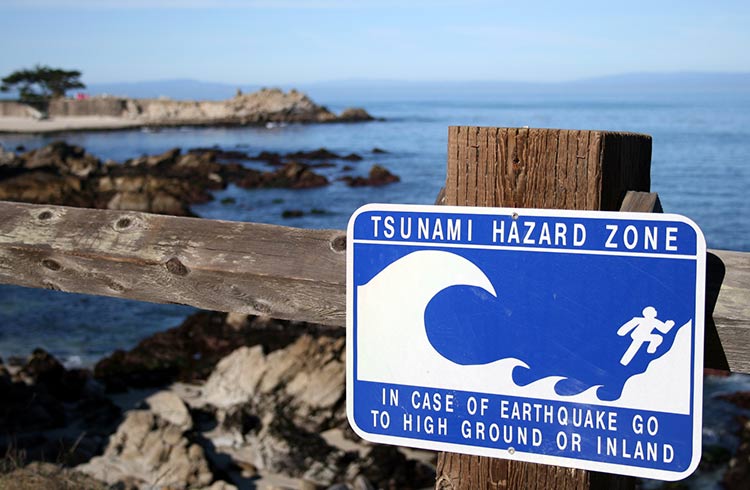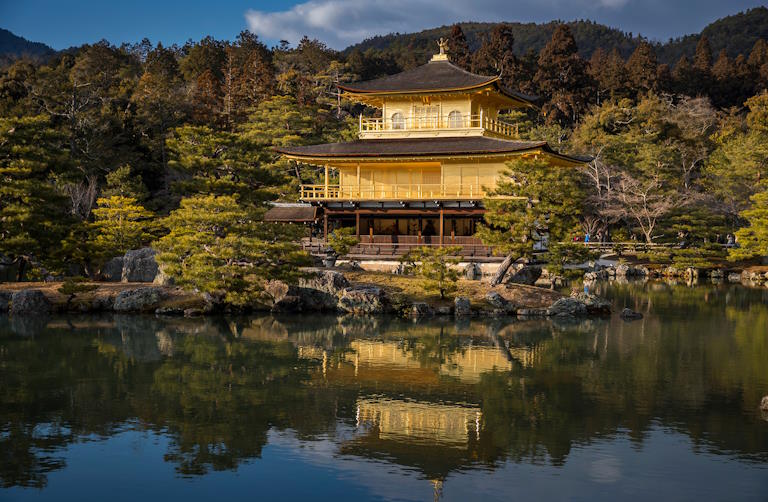5 Ways To Stay Safe if You’re in an Earthquake in Japan
The ground is swaying, and it’s not because of the sake? Ronan O'Connell shares his tips on what to do if you're in Japan when an earthquake strikes.
 Photo © iStock/btrenkel
Photo © iStock/btrenkel
Japan is far more prone to natural disasters than most countries, with a long history of deadly earthquakes, tsunamis, typhoons and volcanic eruptions. Here’s what you need to know about its earthquakes and tsunamis.
- How common are earthquakes in Japan?
- Why are earthquakes so common in Japan?
- How to stay safe in an earthquake
- What is it like to experience an earthquake?
- More resources
- Are tsunamis a serious threat in Japan?
How common are earthquakes in Japan?
After Indonesia, Japan has more earthquakes than any country in the world. About 10% of all the planet’s earthquakes occur in or near Japan, according to a 2017 study published by the Asia Oceania Geosciences Society. Japan has more than 1,000 per year, on average, although the majority are minor tremors not noticeable to humans.
Japan does, however, experience at least one earthquake per year of magnitude 7.0 or higher in severity, on average. A magnitude 7.0 to 7.9 is defined as a major earthquake that can cause widespread damage and many casualties. In 1995, for example, a magnitude 6.9 quake near Kobe city caused 6,433 deaths and more than USD $100 Billion of damage.
In 2011, Japan suffered one of the worst natural disasters in modern history, the Great Sendai Earthquake. This enormous earthquake was the fourth most powerful in recorded history, at magnitude 9.0, and triggered a series of giant tsunamis that engulfed many towns on Japan’s east coast. The quake and tsunamis combined to kill more than 20,000 people, and cause more than USD$200 Billion of damage.
Why are earthquakes so common in Japan?
About 90% of all earthquakes occur in what is known as the world’s Ring of Fire, according to the National Geographic Society. This is an arc of fault lines, shaped a bit like a crooked horseshoe, which runs for about 25,000mi through the Pacific Ocean, and across Japan.
The Ring of Fire is also home to about 75% of the world’s active volcanoes. All of this dramatic natural activity along the ring is due to it following the boundaries between a series of the earth’s tectonic plates, which collide and then overlap or rub against one another. The extreme energy created by these plate interactions causes volcanic activity or earthquakes.
After an earthquake, it’s also worth checking the Japan Meteorological Association earthquake webpage, which gives the most recent information, all in a matter of seconds after an earthquake hits.
How to stay safe in an earthquake?
- Tourists to Japan can download the popular Yurekuru Call app which uses live information from the Japan Meteorological Agency to provide warnings and updates about earthquakes and tsunamis
- If you’re inside a building during an earthquake, take cover beneath a doorway, which is less likely to collapse than a ceiling
- Shelter underneath something strong – such as a table or chair – or place a pillow or thick blanket on top of your head
- Stay clear of windows or large, heavy items like cabinets, fridges or televisions, which could topple and crush you
- If you’re in a city, stay indoors, as there is an even greater risk of being struck by debris in the street
- Do not use an elevator, which could malfunction, leaving you stuck inside
- If you’re outdoors when a quake occurs then find an open space, away from buildings or large trees, lie down and cover your hea.
- If you are on a train or in the subway during a quake, rest assured that these Japanese transit systems are designed to respond to such tremors. They immediately stop in response to significant seismic activity
- Finally, when in doubt, do as the locals do. Most Japanese people have experienced many tremors, including multiple significant earthquakes, and are well drilled in how to respond.
What is it like to experience an earthquake in Japan?
Japanese people are accustomed to tremors and typically respond in a calm fashion, as I learned while visiting Tokyo on 7 December 2012. While I sat in my hotel room watching TV, the building began to shake due to a 7.3 magnitude earthquake off the eastern coast of Japan.
Only the previous year, Japan had been devastated by the Great Sendai quake and tsunamis. With this catastrophe fresh in my mind, I panicked and ran to the hotel lobby for help. There I found the hotel manager coolly telling other terrified foreign guests to stay in their rooms and remain composed.
The Japanese guests appeared far less perturbed. “It will be over soon,” the manager told us all. He was right. But, soon after, I read media reports of a predicted tsunami headed for the Japanese coast. I couldn’t sleep that night.
More resources
- Japan National Tourist Association Earthquake Safety page
- The Tokyo Rinkai Earthquake Prevention Center is a free center that teaches about natural disasters using all sorts of hands-on exhibits, including walking through a post-earthquake Tokyo.
Are tsunamis a serious threat in Japan?
Japan is one of the world’s tsunami hotspots, as more than 80% of the world’s tsunamis occur along the Ring of Fire, according to UNESCO’s International Tsunami Information Center. Separate from tidal waves, which are caused by gravitational forces, tsunamis are the result of massive displacement of ocean water. That displacement can be caused by a volcanic eruption or a landslide but is mostly commonly created by an earthquake.
More specifically, tsunamis are typically triggered by a thrust earthquake, which is where two tectonic plates collide and one then moves vertically. That vertical plate movement displaces a huge volume of seawater, which flows away from the earthquake epicenter, before slowing down and increasing in height the closer it gets to land. To create a destructive tsunami, an earthquake typically needs to be at least 7.5 in magnitude, according to UNESCO.
Japan has one of the world’s most advanced tsunami warning systems, connected to its earthquake monitoring offices. After any significant earthquake in or near the country, the Japan Meteorological Agency estimates the possibility of a resulting tsunami.
If there is a chance Japan’s coast could be affected by a tsunami, the JMA issues warnings to potentially affected regions within three minutes of the quake occurring. These clear warnings come in the form of loud, public sirens and media announcements.
Related articles
Simple and flexible travel insurance
You can buy at home or while traveling, and claim online from anywhere in the world. With 150+ adventure activities covered and 24/7 emergency assistance.
Get a quote


No Comments